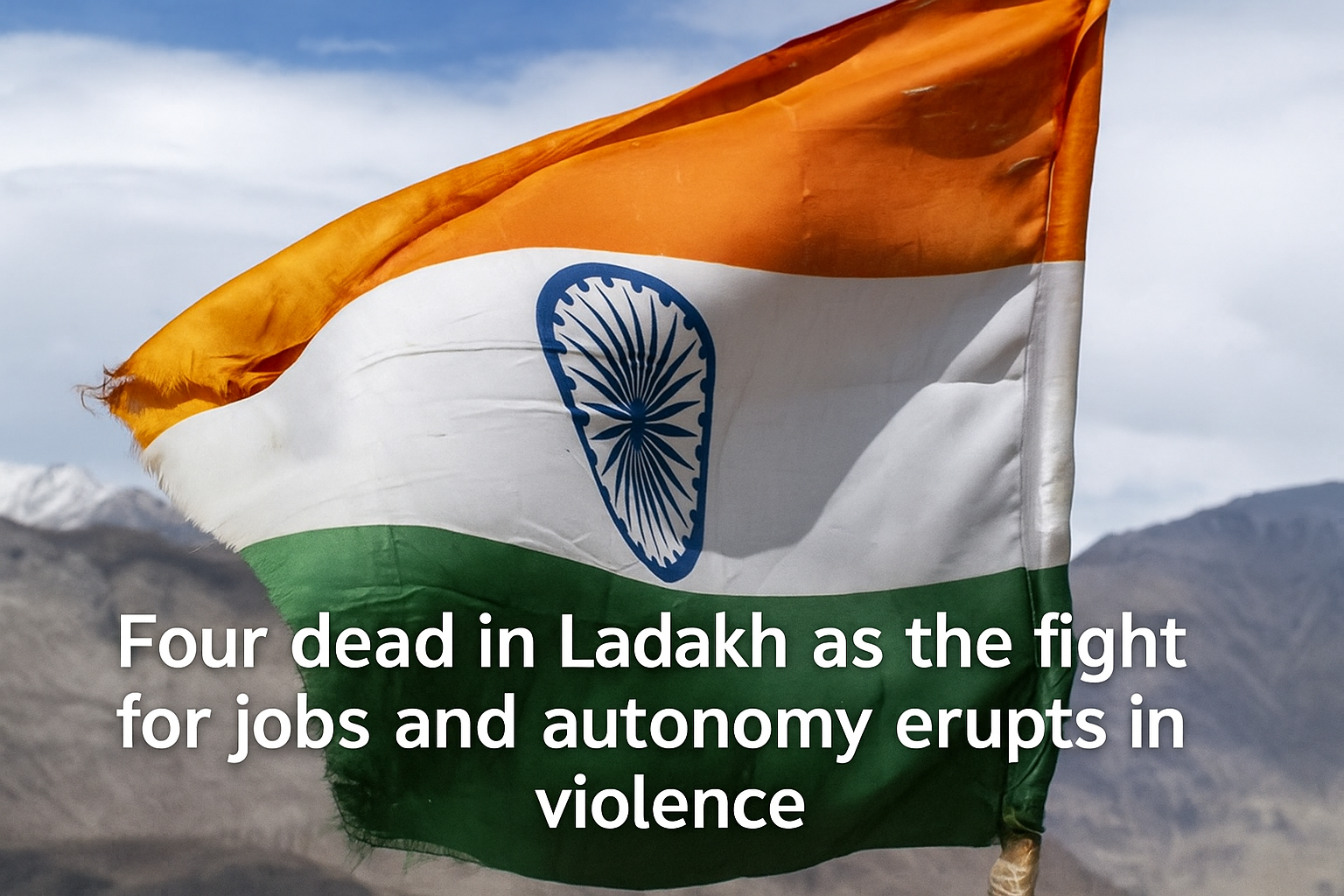Ladakh Unrest: At Least Four Killed as Statehood Rally Turns Deadly
Breaking: Reports say at least four people have died and dozens were injured in Ladakh after protests demanding statehood and local job quotas clashed with police on Sep 24.
What's Actually Happening?
According to reports, including two sources speaking to CNA, protests in India's Himalayan region of Ladakh on Wednesday (Sep 24) demanding full statehood for the Union Territory and reserved government jobs for locals turned violent. Demonstrations that drew hundreds — mainly youth and local activists — clashed with security forces. The confrontation left at least four people dead and many more injured; dozens are reported hurt. Details remain sketchy as authorities and local sources continue to provide updates.
Here's the Breakdown
• Key development: Protests over statehood and job quotas in Ladakh escalated on Sep 24, with clashes between demonstrators and police leaving at least four people dead and dozens injured, according to media reports and local sources.
• Background context: Ladakh was carved out of Jammu & Kashmir and made a Union Territory without a legislature in August 2019. Many residents — especially in Leh — have campaigned for full statehood and stronger local protections, including quotas for government jobs and land rights.
• Current situation: Tensions remain high. Emergency responses, hospital admissions and on-the-ground blockades have been reported; official statements are expected from local administration and the Centre. Independent verification of some casualty and action details is still pending.
Why This is Trending
• Primary impact: This is a major escalation in a long-running demand for statehood and local economic safeguards in a sensitive Himalayan border region — and it directly challenges how the Centre manages peripheral territories.
• Public interest: The deaths, youth involvement, and the demands for jobs and political power have electrified social media and mobilised diaspora and rights groups, making the story nationally resonant.
The Bigger Picture
• Immediate effects: Short-term consequences will likely include tightened security, curfews or restrictions in protest hotspots, emergency medical responses, and a media and political storm over use of force and crowd management.
• Future implications: If demands for statehood gain wider traction, Delhi could face increased political pressure to revisit Ladakh’s administrative status, which would have constitutional and electoral implications — and potentially reshape Centre–UT relations in the region.
What This Means for You
• Direct impact: Travel to and within Ladakh may be disrupted; local businesses and tourism (already seasonal and fragile) could suffer. The event raises wider questions about how the Centre balances security, development and local aspirations in border regions.
• Bottom line: The violence underscores that unresolved local political demands — when combined with economic anxieties — can rapidly escalate into national flashpoints that demand careful political management and transparent investigations.
The Real Story
This is not just another protest. The deaths in Ladakh highlight the combustible mix of identity, economic grievances and constitutional status that has been simmering since the 2019 reorganisation of Jammu & Kashmir. Young locals demanding jobs and a clear political voice confronted authorities, and the clash became deadly. For the Centre, this is both a governance test and a reputational challenge: how it responds — quickly, transparently and with sensitivity to local demands — will shape politics in Ladakh for years and could influence federal policy on other border or disputed regions. For citizens across India, the episode raises urgent questions about democratic grievance redressal, regional marginalisation and the use of force in civil protests.
What's Coming Next?
• Official investigation into the deaths and injuries — findings and accountability will be closely watched.
• Political reactions from Ladakh leaders, Parliamentarians and the Ministry of Home Affairs — possible calls for talks or fast-tracked administrative remedies.
• Renewed public mobilisation or strikes by local groups if authorities do not offer prompt redress, and sustained national debate on statehood, employment quotas and Centre–UT governance models.








Comments